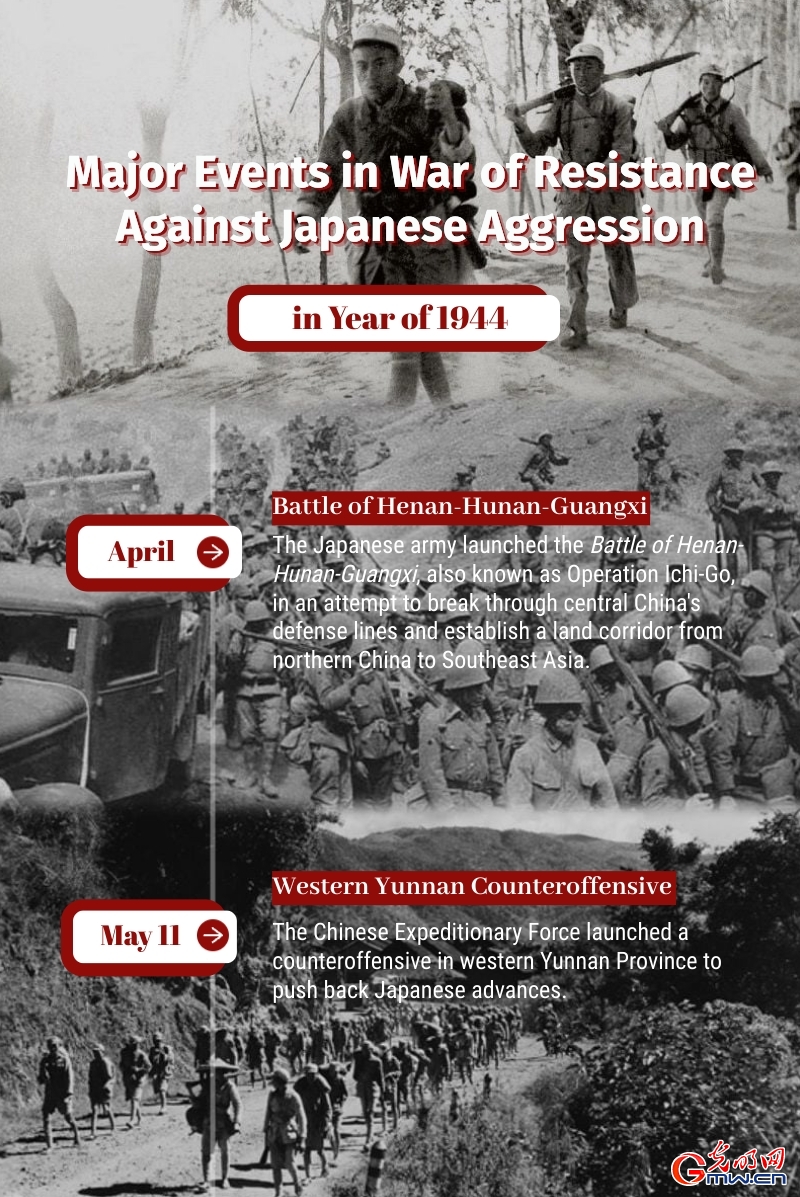

In 1944 the War of Resistance Against Japanese Aggression entered a critical phase marked by large-scale Japanese offensives and growing Chinese countermeasures. The year saw intensified fighting across central and southwestern China as Japan attempted to break Chinese resistance through a decisive military campaign.
In April, the Japanese army launched the Battle of Henan-Hunan-Guangxi also known as Operation Ichi Go. The operation aimed to break through central China's defense lines and establish a land corridor from northern China to Southeast Asia. In the face of massive offensives, Chinese forces mounted stubborn resistance across multiple fronts.
On May 11, the Chinese Expeditionary Force began a counteroffensive in western Yunnan Province. The operation aimed to expel Japanese troops from the China-Myanmar border region and reopen the land route in Myanmar.

点击右上角![]() 微信好友
微信好友
 朋友圈
朋友圈

请使用浏览器分享功能进行分享
